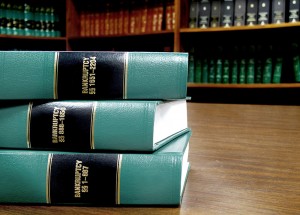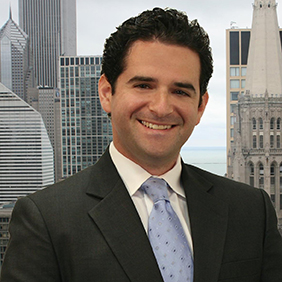- Home »
- Basics for Beginners »
- Dealing With Distress for Fun & Profit – Installment #15 – Protecting Your Bankruptcy Claim
Dealing With Distress for Fun & Profit – Installment #15 – Protecting Your Bankruptcy Claim

This series was started (click here to read from the beginning) with a broad overview of business bankruptcy but our last few installments have focused on unsecured creditors (click here to read about unsecured creditors) and the priority scheme in bankruptcy (click here for the 30,000-foot view or you can find more specific treatment here, here and here). In this installment, we move on to the nuts and bolts of filing, preserving and protecting your claim in bankruptcy.
A. File Proof of Claims and Adhere to Bar Dates to Protect Your Claim
Of all bankruptcy case deadlines, the proof of claim bar date is probably the most critical from a creditor’s perspective. Missing a bar date can cause the claim to be disallowed in a chapter 11 case or subordinated in a chapter 7. A late claim may be allowed if the creditor can show “excusable neglect,” but no creditor wants to be in that position.[2]
Depending on the chapter under which the case was filed, at some point, the bankruptcy court will enter an order setting the claims bar date. Shortly thereafter, the debtor is required to send notice of the claims bar date to all known creditors along with a proof of claim form. A copy of the proof of claim form can be found here.
As a creditor, once you are aware of the bankruptcy case, you should proactively monitor the case docket to identify the bar date for your claim(s). Although the debtor is required to serve all known creditors with actual notice, it is best to keep on top filing deadlines. For example, if the debtor can demonstrate that notice was sent to any of your business addresses, your receipt of the notice is implied. To demonstrate that you did not in fact receive the notice (and were not otherwise aware of the filing deadline), you’ll need to prove that such notice was never actually received. Be proactive. Avoid this issue altogether and simply seek out the bar date on your own without waiting for the notice to arrive.
In chapter 11 cases, you do not need to file a proof of claim if you agree with the way the debtor listed your claim in its schedules and your claim is not listed as contingent, unliquidated, or disputed. In chapter 7 cases, you need to file a proof of claim once the chapter 7 trustee files a report indicating that there are assets for distribution.
As a practical matter, debtors are incentivized to schedule claims as contingent, unliquidated, or disputed on their schedules. Per Bankruptcy Rule 3003(b)(1) and section 1111(a), scheduled claims that are not contingent, unliquidated, or disputed are deemed allowed as scheduled. Therefore, a creditor must “prove up” its claim if it was scheduled as contingent, unliquidated, or disputed or risk it being either reduced or even disallowed.
Further, when voting on a bankruptcy plan, creditors are entitled to vote in the class in which there claim is either scheduled or filed. For instance, a creditor with a general unsecured claim can vote in its respective class of claims; whereas, a creditor with a secured claim (who’s claim is somehow impaired) can vote in its respective class. Contingent, unliquidated or disputed claims are often liquidated or allowed in a specified amount for the purposes of voting even if the claim itself remains subject to potential disallowance.
Procedurally, the proof of claim does not need to reflect a liquidated amount to be timely filed. The debt can be contingent upon an event to occur in the future, and, upon such occurrence, the proof of claim can be amended after the bar date to reflect the liquidated, non-contingent amount due. Unlike requests to file a late proof of claim, amendments to timely filed proofs of claim are freely granted and seldom opposed on timeliness, unless they assert completely new or different claims.
Finally, a creditor should understand that by filing a proof of claim, it “submits to the equitable jurisdiction of the Bankruptcy Court, and therefore waives their right to a jury trial on that claim.”[3]
B. Monitor the Debtor’s Chapter 11 Plan and Proposed Distribution Timeline to Protect Your Claim
For most unsecured creditors, whatever payday, if any, they may receive will come after the chapter 11 debtor’s plan is submitted and approved by the Bankruptcy Court (for more information on plan confirmation click here). Timing for this process varies significantly from case to case ( for more information on the “mundane middle” of a bankruptcy case click here). When the plan is filed, you should look to the plan’s disclosure statement for the appropriate sections related to distributions for unsecured creditors. The disclosure statement is akin to a prospectus and includes a narrative of the plan’s key details. Here, you should find information as to how much you can expect to receive and when you can expect to receive it.
The circumstances vary from case to case, the applicable provisions, if ultimately confirmed, have generally been vetted by the other parties in interest, including secured creditors, a committee[4] and sometimes the U.S. Trustee with the interests of the general unsecured creditors in mind. If you don’t want to wait until confirmation to get paid, you may be able to sell your unsecured claim to a “claim trader.” An overview on bankruptcy claims trading can be found here. This can be a valuable source of liquidity for creditors that are willing to take a discount in exchange for early and guaranteed recovery.
C. Pre-Bankruptcy Preventive Maintenance to Protect Your Claim
As the old adage goes: “an ounce of prevention is worth a pound of cure.” This saying is quite appropriate in the bankruptcy context where proper preventative steps, if taken pre-petition, can significantly reduce a particular creditor’s exposure and improve its standing in a bankruptcy case.
1. Avoiding Preference Liability
Many creditors don’t realize it, but in addition to being responsible for their unpaid pre-petition claims, they may also be liable to the debtor’s estate for receiving pre-petition preferential payments (a/k/a preferences, for a definition of preferential transfers click here), The Bankruptcy Code permits a debtor or trustee to avoid and recover payments made by the debtor to creditors in the 90 days before the bankruptcy filing. Creditors, having done nothing wrong, often end up as defendants in lawsuits merely because they received a greater distribution than other unsecured creditors during the weeks prior to the debtor’s bankruptcy filing.
The creditor/defendant, however, can still defend itself. For example, payments will be safe from recovery if they constitute contemporaneous exchanges; payments made in the ordinary course of business; and/or security interests that secure debts that bring new value to the debtor. By keeping accounts current, following ordinary billing practices, and keeping up to date on account payments you can limit your exposure. Further, suppliers may, to a certain extent, be able to mitigate preferential transfer liability risk by continuing to supply debtors during the pendency of the case (for more information on a recent Delaware bankruptcy case, click here).
2. Monitor Debtor’s Solvency
A number of financial services firms provide credit opinions regarding commercial companies. If, for instance, your company extends trade credit to a particular customer whose business represents a significant source of your company’s revenue, it would be prudent to request such an opinion periodically. For more information on the lifecycle of a distressed company click here.
3. Establish Protective Payment Alternatives
As mentioned, if you become aware that a particular company is a credit risk and may potentially seek bankruptcy protection, you can significantly reduce your exposure by initiating certain payment alternatives that will protect your interests in the event of a filing. These alternatives include obtaining advance payment or cash on delivery (COD) for shipments, establishing an evergreen retainer or cash deposit, obtaining letters of credit, and entering into third-party guarantees.
To read other installments in this series, click here.
For a great discussion on insolvency, we recommendthis webinar and this webinar. You can also learn about federal equity receiverships and get advice on what to do when your business is struggling.
[1] Brandess is a partner at Sugar Felsenthal Grais & Hammer LLP’s Chicago office. He is ranked AV® Preeminent™ by Martindale.com and has been listed as a Rising Star by Super Lawyers magazine for the past two years. Michael was named the Emerging Leader of the Year by the Turnaround Management Association’s Chicago/Midwest chapter in 2015. Smith is set be begin his restructuring career in Chicago the fall of 2017 and recently received the ABI’s Medal of Excellence. The authors thank Professor George Kuney and Jonathan Friedland, whose comprehensive thought leadership on the subject matter served as the foundation for this article. [2] The burden to demonstrate “excusable neglect” is fairly high. A creditor must address (i) the danger of prejudice to the debtor; (ii) the length of delay and its impact on the judicial proceedings; (iii) the reason for the delay, including whether the delay was within the reasonable control of the movant; and, (iv) whether the creditor acted in good faith. Courts have reasoned that “[a]ll factors must be considered and balanced; no one factor trumps the others.” In re In re Garden Ridge Corp., 348 B.R. 642, 645 (Bankr. D. Del. 2006). [3] See Granfinanciera, S.A. v. Nordberg, 492 U.S. 33 (1989) (holding that a person who has not submitted a claim against the bankruptcy estate has a right to a jury trial when sued by the trustee to recover damages for a fraudulent monetary transfer); Langenkamp v. Culp, 498 U.S. 42 (1990) (holding that, by filing claims against the bankruptcy estate, respondents triggered the process of “allowance and disallowance of claims,” thereby subjecting themselves to the Bankruptcy Court’s equitable power) (citing Grandfinanciera, 492 U.S. at 492 U. S. 58- 59, and n. 14). [4] For a discussion of recent Delaware Bankruptcy decision that was adverse to Creditor’s committees click here.
About Michael A. Brandess
Michael A. Brandess, a partner at Husch Blackwell and part of the Bankruptcy, Reorganization and Creditors’ Rights practice group, is consistently recognized for his dedicated and zealous representation of his clients, finding the most efficient and creative solutions, securing his clientele the most value for their claims. Michael’s practice focuses on the representation of asset…

About Luke Smith
Luke Smith graduated from the University of Tennessee College of Law with a concentration in Business Transactions and now works for Kirkland & Ellis. Smith is the Editor-in-Chief of Transactions: The Tennessee Journal of Business Law, and recently co-authored an article titled "Perfect Civil Enforcement? Litigation Financing in the Wake of Gawker Media v. Bollea." Academically, Smith…

Related Articles
Kuney’s Corner – Cram Down: When the Creditor Says “No”
The Chief Restructuring Officer: Architect, Leader, & Change Agent
Opening the Kimono: Operational and Financial Reporting Obligations at the Outset of a Chapter 11 Case
90 Second Lesson: When a Seller of Real Property Files for Bankruptcy Before Closing
Subchapter V of Chapter 11: A User’s Guide
Personal Property Appraisals 101
